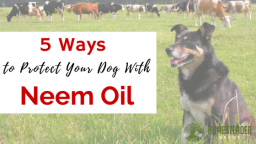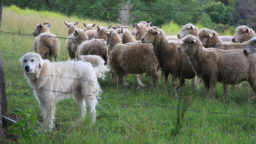We’re all looking forward to the return of summer’s warm weather, but nobody’s excited about flea and tick season! Whether your pet is your hiking trail buddy or the king of your homestead’s acreage, it’s unavoidable he’ll be exposed to fleas and ticks. Even dogs who spend most of their time indoors can become unwitting hosts for these parasites. Unless daily tick checks are your idea of fun, a good repellent is an absolute necessity.
However, the mainstream options for protecting your pet aren’t without risks of their own. Flea collars, sprays, and other products are often made with potent pesticides and chemicals that pose just as much risk to your pet as the flea or tick itself. If this conundrum has you feeling frustrated and wanting to keep your pet in a bubble, try neem oil, a natural alternative! Here are three simple recipes for safe and effective pet protection using neem oil:
Neem Oil Rub
Ingredients:
2 tablespoons vegetable oil
1 tablespoon aloe vera gel
1.25 ml (20 drops) neem oil
Mix all ingredients together and put into a dropper bottle. Apply a few drops to your palms and rub through your dog’s entire coat, reapply oil to hands as needed until whole coat is treated.
Neem Oil Spray
Ingredients:
2.5 ml (40 drops) neem oil
1-2 ml (about 1/4-1/2 teaspoon) of mild soap or detergent
2 cups warm water
Mix water and soap first and then slowly add neem oil. Add to spray bottle and use immediately. Discard after use as neem oil will break down and lose its potency after 8 hours. Be sure to protect your dog’s eyes when applying!
Neem Oil Shampoo
Add neem oil into your pet’s usual shampoo at a rate of 1-5 ml (about ¼-1 teaspoon) for every 100 ml (8 ounces) of shampoo. Use only 1 ml of neem oil for a preventative maintenance shampoo. For a pre-existing or severe infestation, use 5 ml neem oil. Massage shampoo thoroughly into the coat. It will leave an odor that will continue to repel unwanted pests. Treat weekly or more often for effective control and lasting protection.
Tips
Neem oil has a very strong smell, which is this natural alternative’s only drawback. For use on cats, use neem leaf tea as neem oil is considered unsafe for feline use. Make small, frequent batches of each treatment as their shelf life is very short.
If you enjoyed this, you might also like….





